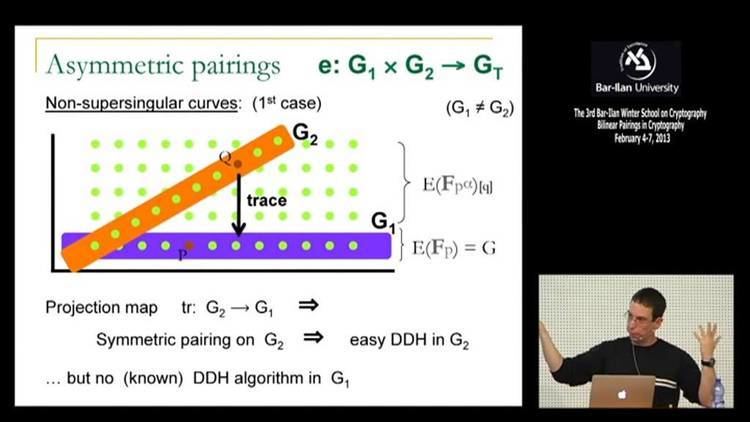 | ||
Pairings in cryptography
Pairing-based cryptography is the use of a pairing between elements of two cryptographic groups to a third group with a mapping
Contents
Definition
The following definition is commonly used in most academic papers.
Let
- Bilinearity:
∀ a , b ∈ F q ∗ , ∀ P ∈ G 1 , Q ∈ G 2 : e ( a P , b Q ) = e ( P , Q ) a b - Non-degeneracy:
e ≠ 1 - Computability: there exist an efficient algorithm to compute
e .
Classification
If the same group is used for the first two groups (i.e.
Some researchers classify pairing instantiations into three (or more) basic types:
Usage in cryptography
If symmetric, pairings can be used to reduce a hard problem in one group to a different, usually easier problem in another group.
For example, in groups equipped with a bilinear mapping such as the Weil pairing or Tate pairing, generalizations of the computational Diffie–Hellman problem are believed to be infeasible while the simpler decisional Diffie–Hellman problem can be easily solved using the pairing function. The first group is sometimes referred to as a Gap Group because of the assumed difference in difficulty between these two problems in the group.
While first used for cryptanalysis, pairings have also been used to construct many cryptographic systems for which no other efficient implementation is known, such as identity based encryption or attribute based encryption schemes.
A contemporary example of using bilinear pairings is exemplified in the Boneh-Lynn-Shacham signature scheme.
Cryptanalysis
In June 2012 the National Institute of Information and Communications Technology (NICT), Kyushu University, and Fujitsu Laboratories Limited improved the previous bound for successfully computing a discrete logarithm on a supersingular elliptic curve from 676 bits to 923 bits.
